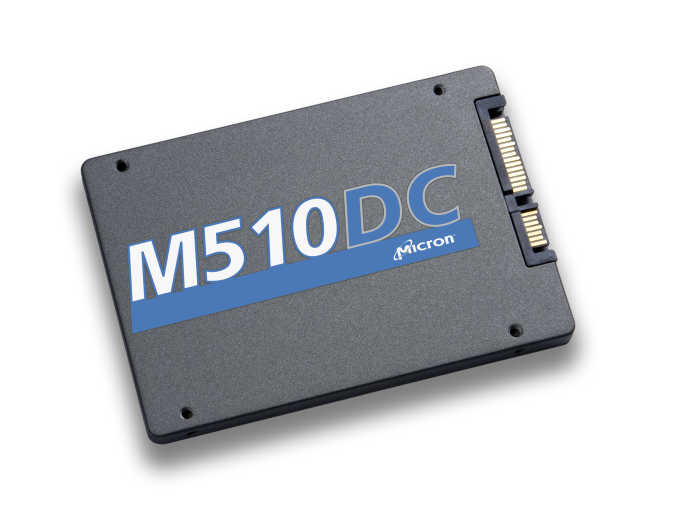Micron M510DC (480GB) Enterprise SATA SSD Review
by Kristian Vättö on July 21, 2015 8:00 AM ESTFinal Words
I'll start with the positive sides of the M510DC. First off, the M510DC delivers higher endurance than the most read-focused drives. Samsung 845DC EVO and Intel's DC S3510 both come in at only 0.3 DWPD with SanDisk's CloudSpeed Eco being rated at 1 DWPD, so at 2 DWPD (1 for 960GB SKU), the M510DC is more durable than its direct competitors. Whether the extra endurance is beneficial depends on the workload because I would argue that for the most read-intensive workloads (such as media streaming and cloud storage) 0.3 DWPD is sufficient because such large amount of the data is static, but the higher endurance obviously opens the doors for usage in workloads with more write activity.
The second thing I like is the inclusion of TCG Enterprise encryption. Micron has always been at the forefront of encryption adoption and it was the first one in the industry to adopt TCG Opal 2.0 to its M500 client SSD. That extends with the M510DC as the company is bringing next generation encryption to the enterprise space. The advantage of TCG-E is the transparency to the host and ease of deployment because with a supported RAID card TCG-E won't require any additional installation. I don't expect TCG-E to be adopted very quickly in a large scale, but I do see the verticals (financial and medical institutions) having interest for the technology.
Unfortunately, the performance leaves room for improvement. In pure random write performance the M510DC is actually faster than its competitors, but when it comes to mixed and read performance it's outperformed by the 845DC EVO. Sequential read in particular is an area where the M510DC falls behind the EVO and frankly that's a quite important metric for a drive that's designed for read workloads.
Ultimately it's really the consistency that is M510DC's Achilles' heel, though. On average the performance is decent, but when digging deeper it turns out that the average hides significant variations in performance with worse drops being >10ms in latency. The importance of consistency depends on the application and some are more lenient than others, but in general it's critical for a drive to deliver performance that is good but also consistent, so the end-user will have a consistent user experience of whatever service the drive is powering.
All in all, it boils down to whether the pros outweigh the cons and whether the price reflects this. The M510DC is kind of a model in between the drives for read and mixed workloads. For performance sensitive read-centric applications, the 845DC EVO is a better pick because it delivers better read and mixed performance, and most importantly it's very consistent and power efficient. However, if write endurance is a bigger concern than performance and consistency, the M510DC is a viable alternative that is priced below the mixed workload drives (such as the M500DC), while still delivering competitive endurance at the expense of some performance and consistency.











22 Comments
View All Comments
boe - Saturday, July 25, 2015 - link
Bring on the 10TB SSDs. The 512GB-2TB models have lost all interest for me.thulasiram.valleru - Monday, August 10, 2015 - link
In 4KB IOPS category, Samsung beats against most of its competitors and I am surprised no SSD delivers the speed in category 4KB read and writes as this company with this price range. Any body has a reasonable answer. I am not sure whether in house design and manufacturing of components made it possible for Samsung to achieve the difference.